Defying Limitations: Hyperbaric Oxygen Therapy’s Impact on Reversing the Aging Process
Getting older can feel overwhelming. Between experiencing lapses in memory, a decline in your physical capabilities, and ongoing health issues, you may wonder if there’s a better way to age gracefully. While many believe these age-related issues are “just a part of the norm,” it’s likely because they haven’t heard about Aviv’s hyperbaric oxygen therapy (HBOT).
Aviv Clinics’ HBOT is a premier, proven process for reverse aging. A medical treatment that involves using the hyperoxic-hypoxic paradox, HBOT increases oxygen levels in the body up to 10 times higher than normal. This encourages the body to unlock its self-healing abilities. With the right team by your side, HBOT can help your brain and body age gracefully.
Learn the science behind Aviv’s hyperbaric oxygen therapy and its impact on reversing the aging process. The time to move forward with confidence begins now.
Daniel van Otterdijk, former Aviv Clinics client:
“My memory wasn’t as sharp as it used to be…and I just accepted it as a part of the aging process. [After the Aviv Medical Program] there’s been massive change in my life.”
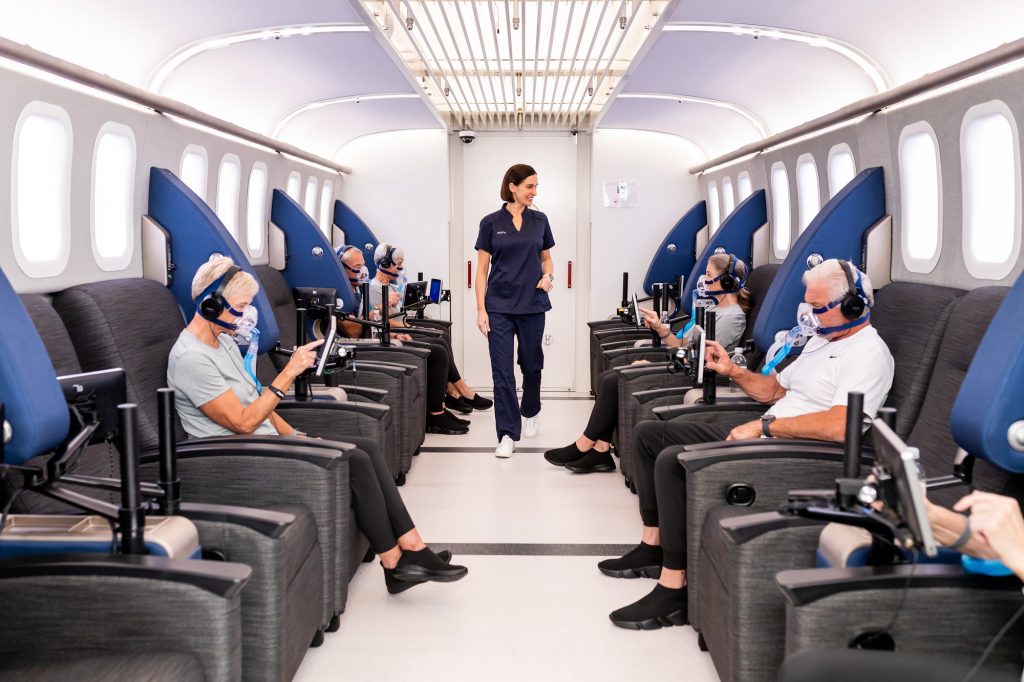
HBOT: A Proven Reverse Aging Method
Reverse aging is a clinically-proven outcome that enhances the quality of life for many, no matter their age or cognitive and physical condition.
How? The answer lies in five key hallmarks of aging:
- Telomeres: Think of telomeres as the hardened ends of shoelaces (aglets). Just as aglets protect the laces, telomeres protect our chromosomes from declining. Telomeres naturally shorten as we age.
- Senescent cells: These are aging cells that are alive but have stopped multiplying. When senescent cells collect over time, they can contribute to age-associated conditions.
- Stem cells: Stem cells repair damage in the body. Stem cells naturally decrease with age. This can make it difficult for our bodies to regenerate damaged tissue.
- Mitochondria: These are parts of cells that develop energy for the body. Mitochondria gradually grows less efficient over time.
- Oxygen: Arteries become narrower with age, which restricts blood flow and oxygen to essential organs.
A landmark study discovered that HBOT could reverse the main biological signs of aging in humans:
“We have found that using our protocol we are able to decrease the numbers of these senescent cells. We’ve also shown that we are able to increase the telomere lengths.” Dr Efrati.
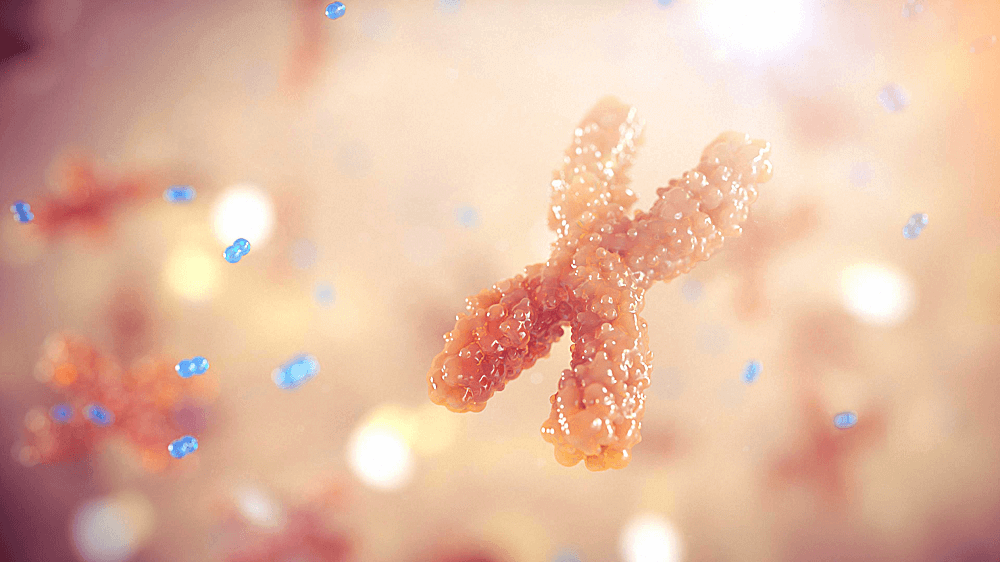
According to Dr. Amir Hadanny (co-author of the study and Aviv Clinics physician), the study has shown that:
“In just three months of HBOT, we were able to achieve such significant telomere elongation—at rates far beyond any of the currently available interventions or lifestyle modifications.”
Let’s dive deeper by walking through the specific ways HBOT can reverse the aging process — ways that have restored many people’s potential for living life to the fullest.
HBOT Can Slow Down Cognitive Decline
The brain is a powerful organ, and you can preserve cognitive health with proper oxygen and nutrients. Cognitive health tends to decline as we get older. This may be why activities, such as keeping track of tasks or analyzing data at work, become harder and more frustrating to do than before.
Luckily, the team at the Sagol Center for Hyperbaric Medicine and Research discovered:
- A specific HBOT protocol can slow cognitive decline, possibly due to its ability to increase blood flow to the brain. This process helps regenerate brain cells, blood vessels and stem cells proliferation.
- The HBOT protocol serves as a safe and effective intervention for cognitive decline:
“In our study, for the first time in humans, we have found an effective and safe medical intervention that can address this unwanted consequence of our age-related deterioration.” –Dr. Shai Efrati
HBOT Can Improve Memory Function
The brain is a delicate organ that often needs a gentle push to reach its full potential.
HBOT can help bridge this gap and improve memory function. Study participants who received HBOT showed higher levels of memory strength than those who didn’t receive the therapy.
HBOT Can Delay the Onset of Alzheimer’s Disease
Poor blood circulation means less blood can reach the brain. This impacts memory, thinking, and behavior and can cause vascular complications—a precursor to Alzheimer’s disease.
This sounds frightening, but the HBOT protocol available at Aviv Clinics Dubai shows promise in:
- Reversing the primary activators for Alzheimer’s disease and dementia
- Managing early symptoms of these conditions
“By treating vascular dysfunction, we’re mapping out the path toward Alzheimer’s prevention. More research is underway to further demonstrate how HBOT can improve cognitive function and become an influential tool in the imperative fight against the disease.” –Dr. Shai Efrati
HBOT Can Encourage Better Blood Circulation
The aging process tends to slow down blood circulation throughout the body—a function that keeps your mind and heart strong and delivers oxygen to organs that need it.
Fortunately, HBOT, delivered using a specific protocol, can improve blood circulation and encourage angiogenesis—the growth of new capillary blood vessels.
HBOT Can Help Manage Chronic Pain
Globally, it has been estimated that 1 in 5 adults suffer from pain. As many of us know personally, suffering from chronic pain often progresses with age.
With the right HBOT process, you don’t have to be the one experiencing painful conditions. HBOT and other therapies, exercise, and proper nutrition can be a systemic way to manage chronic pain.
One study reports that: “HBOT can improve the symptoms and life quality of FMS [fibromyalgia] patients.” It can also manage abnormal brain activity in pain-related areas—a relief for people who have given up hope of ever feeling like themselves again.
HBOT Can Improve Physical Performance
With more oxygen in the body, Aviv’s HBOT protocol can help you feel physically stronger, promoting:
- Better fitness, strength
- Improved coordination, and balance
- Less pain and inflammation
- Better sleep
- Improved sexual performance for men
Watch as Dr. Joseph Maroon shares data on how his health progressed and his triathlon time improved after participating in a personalized HBOT program:
Aviv Clinics Makes It Possible to Live Well for Longer
The details above are true testaments to HBOT’s impact on reversing the aging process. While society believes having a variety of health problems are simply a natural part of aging, science says otherwise. And at Aviv Clinics, we established a renowned program based on this data.
The Aviv Medical Program: A New Approach to Aging
The Aviv Medical Program was founded to help individuals from all walks of life reach their full physical and cognitive potential. Clients have noted feeling “very energetic” and a revival of self-esteem.
Depending on your symptoms, needs, and goals, your program can include:
- In-depth review of medical history
- Comprehensive physical and neurological exam
- Physical therapy evaluation
- Highly advanced brain imaging scans
- Neurocognitive tests
During the treatment, the program can include a combination of:
- Specific HBOT protocol from the mentioned studies
- Cognitive training
- Physical training
- Dietary coaching
Our Diverse and Experienced Team
There isn’t a one-size-fits-all solution to enhancing physical and cognitive performance. This is why it’s important to have a team of experienced and supportive medical professionals by your side throughout your aging years.
Aviv Clinics’ diverse team of neurologists, Physiotherapists, and physicians explores each client’s health and performance from different angles. This personalized attention enables us to build a custom treatment plan just for you.
Our Success Stories
Our incredible clients walked into the Aviv Medical Program with a wide range of age-related concerns but walked out with a renewed zest for life. Learn about their journey
They are evidence of the powerful impact Aviv Clinics’ powerful treatment plan can have on your or your loved one’s life. The current challenges that you face do not need to be part of your life moving forward.
Schedule a Consultation
Improving the quality of your life starts here. To begin the reverse aging process, contact our team to schedule a consultation.
Ways to Enhance Your Post-Stroke Journey: 3 Brain Exercises to Consider
When we think of exercises, we often think about movement. As much as physical activity is essential to post-stroke health, mental exercises are just as important.
For post-stroke patients, brain exercises can be a critical component of their rehabilitation journey, as “cognitive impairment and memory loss are common after a stroke.”
The good news is the brain is a powerful organ that can learn at any age. Medical experts note, “the reality is that everyone has the capacity to develop new cells that can help enhance cognitive functions.” The more you will engage your brain – the better are the chances you will see cognitive improvement.
Brain exercises can unlock this potential. Below, we offer insights into three main types of brain exercises for stroke relief: games, apps, and lifestyle activities. We also discuss the training Aviv Clinic’s post-stroke program can offer, so don’t miss out.
1. Games for Stroke Patients
Games are not only fun, but they can also improve cognitive performance.

Puzzles
Games like crossword puzzles, Sudoku, and word searches are excellent activities to stimulate the brain.
The most impactful? Crossword puzzles. Researchers specify crossword puzzles are “superior to other brain games in improving memory.”
Let’s also not forget the accessibility crossword puzzles offer—you can find them anywhere online or in newspapers and easily take them on the go.
Board Games
Board games often require critical thinking and teamwork.
Playing board games—like Scrabble, Connect Four, and Battleship—stimulates brain areas that oversee memory formation and thought processes. Games do this by:
- Encouraging high-level thinking. Board games can improve brain skills like strategic thinking, logic, attention, memory, and comparison. Researchers report that “playing non-digital games may be a positive behavior in terms of reducing cognitive decline.”
- Enhancing creativity and self-confidence. The collective nature of board games can help post-stroke patients with creative problem solving while connecting with their friends and family.
Video Games
In a study where post-stroke patients participated in playing Wii Sports Resort—a collection of sports simulation mini-games:
- The group who played video games “achieved better results than the control group”
- Among attention, processing speed, and working memory, “the attention and processing speed improved” the most.
These results illustrate the potential video games have in supporting cognitive rehabilitation after a stroke. Like board games and puzzles, video games can offer the same stimulation the brain needs to enhance critical thinking and memory.
One study even notes that motor-sensor video games could offer physical benefits. When working with a therapist, the games “allow patients recovering from a stroke to improve their motor skills and affected arm movements.”

2. Devices and Apps for Stroke Patients
There are some specific devices and apps that provide access to speech and cognitive activities. Though most apps are not specifically for stroke patients, they can still help with neurological rehabilitation.
One tip is to look for ‘Psychomotor skills” apps that calibrate themselves to an individual’s motion range. These can be especially useful for stroke patients.
Here are examples of helpful devices and apps for stroke patients:
- BrainHQ is a cognitive training app. The app offers several games that help Aviv Clinics’ clients improve skills in areas—such as memory, attention, brain speed, and navigation—that stroke survivors may struggle with. You can even design your own program, choosing exercises and workouts that meet your personal interests.
- MindMaze has a helpful game-based digital therapy called MindMotion™ GO. It offers full-body motion capture, allowing patients to practice physical and cognitive exercises at the same time.
- Lumosity offers exercises for your mind with a fresh set of games daily to keep your brain consistently challenged. The app also provides reports that track your progress.
- VAST is a virtual reality rehabilitation system we use at Aviv Clinics. It offers the flexibility to work in any physiotherapy practice and helps our patients engage in moto-cognitive activities.
3. Lifestyle Activities for Stroke Patients
Here are some lifestyle activities for stroke patients that shake things up by offering more diverse, non-digital options that can create balance in your life.
Music
Listening to music offers an emotive experience that enhances mood and improves memory. Frequently, a specific song elicits certain memories or forms new ones.
Studies note that music therapy can be a good “motor function rehabilitation” method. Listening to music or singing songs can help “promote neural plasticity”—the ability of the nervous system to adjust itself—and improve “patients’ motor function.”
Have you been interested in learning to play a musical instrument? This activity may offer additional benefits, as “Listening to and performing music reactivates areas of the brain associated with memory, reasoning, speech, emotion, and reward.”
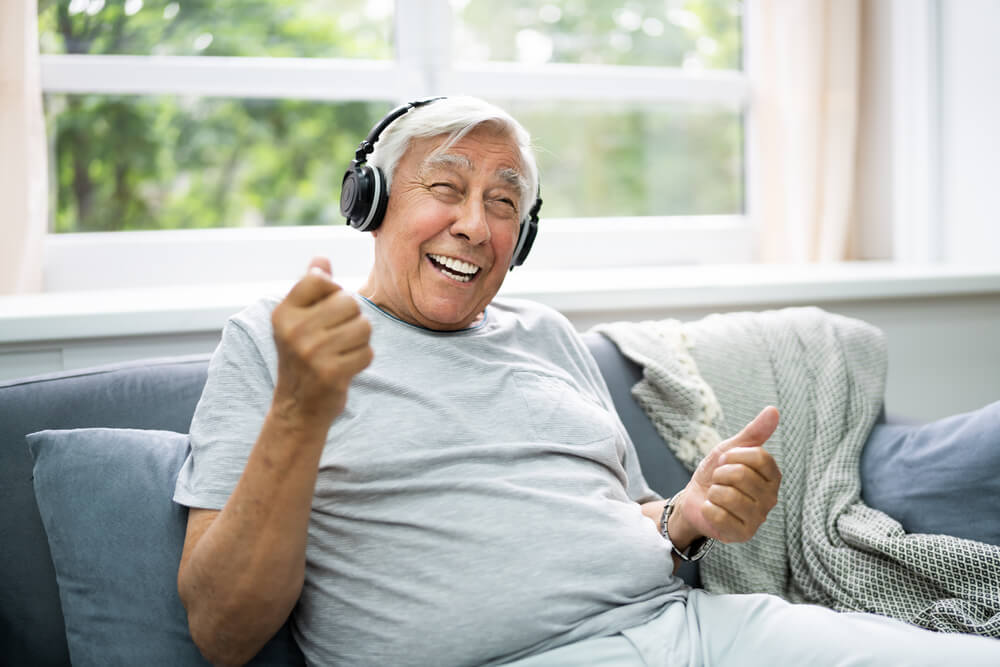
Photography
The Stroke Association recommends photography as a leisure activity. Take a walk around a nearby park or nature sanctuary and take some photos. Photography can be a therapeutic activity that offers a healthy and peaceful distraction. You’ll also get a chance to move your body while snapping pictures.
Aviv Clinics: Post-Stroke Program
The Aviv Medical Program offers a comprehensive post-stroke program targeted to those in the chronic post-stroke phase, typically six or more months after the incident. The Aviv Medical Program consists of a plan that can include the following:
- Hyperbaric oxygen therapy (HBOT)
- Cognitive training
- Physical training
- Dietary coaching
- In-depth review of health history
- Comprehensive physical exam
- Highly advanced brain imaging scans
- Neurological and neurocognitive tests
- Body composition analysis
- A detailed report of our assessment findings
- A post-program report of your improvements and recommendations for future progress
All components of this plan are included in a physician-designed program tailored to the needs and goals of each patient.
Cognitive Training Program
The cognitive training portion of the Aviv Medical Program is performed both inside and outside our hyperbaric oxygen suites. During HBOT sessions, your brain and body unlock their regenerative mechanisms. This helps you become more receptive to other forms of therapy.
As part of your treatment, you may also complete our unique cognitive training regime while exerting yourself physically on the cutting-edge h/p/cosmos medical treadmill. Research shows this combination of physical and cognitive effort maximizes the benefits of the Aviv Medical Program, taking your brain and body to the next level.
Find Hope with Aviv Clinics
Life after a stroke can be challenging. A stroke can suddenly strip away the capabilities we take for granted. Support, trust, and consistency are vital to getting back to optimal health. The medical team at Aviv Clinics offers all three elements while crafting a personalized rehabilitation plan specifically for you.
If you’ve tried the suggested brain exercises for stroke relief and other therapies but haven’t received the desired results, it’s time to seek the help of Aviv Clinics.
What is a Hyperbaric Oxygen Chamber and How Does It Work?
Hyperbaric oxygen therapy (HBOT) exists as an effective treatment for specific health conditions, including decompression sickness, serious infections, non-healing wounds, and severe burns. Advancements in HBOT science have also emerged, expanding the potential of HBOT’s impact. Yet, not all HBOT chambers are the same. The mechanisms by which each chamber works serve different purposes. It’s important to understand how these chambers operate and what benefits can be achieved in order to reach your health goals.
Monoplace vs. Multiplace HBOT Chambers
Aviv Clinics uses the world’s most advanced multiplace hyperbaric oxygen therapy chambers.
Two main types of HBOT chambers exist: multiplace and monoplace. Monoplace HBOT chambers also take two forms—hard-sided and soft-sided. Both forms are designed to only accommodate one person at a time.
Soft-sided monoplace chambers, often referred to as bag HBOT chambers, are primarily used “on the go.” These HBOT chambers pressurize to a minimum amount of pressure and deliver only a slightly higher dose of oxygen than what you’re breathing in the natural environment.
Soft-sided HBOT chambers are mostly used for anti-inflammation and workout or game recovery. You’ll often see them in sports medicine clinics. Bag chambers are also used in mountain climbing. If a climber starts to suffer from altitude sickness, being in the bag chamber allows them to return to sea level faster and start recovery as they are airlifted to safety.
The other type of monoplace HBOT chamber is constructed of more rigid materials, such as plexiglass. You’ll typically find these chambers in wound care clinics. They are pressurized to an atmospheric level that is predetermined (and prescribed) by a patient’s physician. Patients breathe 100% oxygen during the entire therapeutic session, a length of time that is factored into the prescription.
Because patients are separated from clinicians during the HBOT treatment in this type of monoplace chamber, it can become problematic if the patient experiences any sort of health event mid-therapy. A depressurization process must take place before the patient can exit the chamber—which takes time. Plus, if a patient happens to be undergoing a seizure, that depressurization cannot commence until the person stops seizing.
While seizure occurrence is rare during a medical HBOT treatment, it can happen—and is more likely in patients who have pre-existing seizure disorders or a history of low blood sugar. A related complication is there’s no way for clinicians to medically assess what’s happening at that very moment and implement medical treatment.
A third disadvantage is that monoplace HBOT chambers hold a heightened risk for fire. It’s crucial that no electronics are allowed in the monoplace chambers to prevent this risk.
Multiplace HBOT chambers treat multiple individuals at the same time. These chambers are commonly used in the diving industry—for example, in commercial diving for underwater construction and maintenance. However, advancements in HBOT science have led to other medical uses around the world.

At Aviv you will find multiplace HBOT chambers that are more like suites; a little like flying business class, they are spacious, comfortable, and private. Created in partnership with Fink Engineering, the world’s premier provider of hyperbaric suites, our HBOT chambers are the most technologically advanced, and most importantly, your safety is guaranteed.
In multiplace chambers, individuals are also breathing 100% oxygen in a highly pressurized environment. But, each person has their own breathing apparatus. One distinct advantage of multiple chambers is the ability to have a medical professional in the chamber while individuals are undergoing their HBOT treatment—unlike the monoplace chamber’s limitations.
Ultimately, safety is of utmost importance in HBOT treatment. Most medical HBOT facilities that are run through a hospital or clinic are operating with the proper certifications, whether using monoplace or multiplace chambers. At Aviv Clinics, all physicians, nurses, and hyperbaric technologists undergo in-depth training and have reached certification status. However, it’s important to keep in mind not all facilities meet these stringent safety standards.
Advancements in HBOT Science
Modern hyperbaric oxygen therapy protocols go beyond addressing a specific condition. The science, technology, and unique protocols of the Aviv Medical Program—and the design of the clinic’s multiplace HBOT chambers—work proactively to maximize overall health. In other words, the Aviv Clinics HBOT chambers offer more than just oxygen therapy.
The foundational aspects of HBOT treatment are still in play: The multiplace chamber is pressurized to the optimal level, which takes about 10 minutes. Once the target pressure is reached, individuals begin breathing 100% oxygen for a period of 20 minutes. After 20 minutes, masks are removed for five minutes. Total treatment time of two hours.
This on/off alternating protocol of oxygen fluctuation tricks the body into thinking it is in low-oxygen distress. The body’s natural reaction to the rapid decline in oxygen levels is the creation of new stem cells. It also triggers something called hypoxia-inducible factor (HIF), which plays a role in angiogenesis, or the creation of new blood vessels.
Both are instrumental in healing and rejuvenating various parts of the body and brain, in cases such as:
HBOT and the Aviv Medical Program protocols also contribute to enhanced physical performance, cognitive performance, and overall vitality and quality of life.
The Bottom Line
If you’re considering HBOT to progress your health, it’s imperative to know the advantages and potential limitations of the different types of HBOT chambers—and which chamber will best help you reach your goals.
Contact us if you have any questions about HBOT treatments or would like to explore how the Aviv Medical Program can benefit you or a loved one.
Choosing the Right Hyperbaric Oxygen Therapy Program for You
Hyperbaric oxygen therapy (HBOT) has become available for more health conditions to help extend healthspan, improve physical performance, and manage cognitive decline. As more facilities providing HBOT open, different types of HBOT technology and treatment protocols have appeared. It has become increasingly important to understand the differences and identify the option best able to meet your health goals and needs.
What are the types of hyperbaric oxygen therapy chambers?
There are two types of hyperbaric oxygen therapy chambers: multiplace and monoplace chambers.
Multiplace chambers are large, modern, comfortable rooms that feature cushioned seating. They are designed much like a first class airplane seat, with personal entertainment tablets. Aviv Clinics clients receive their HBOT treatments in spacious multiplace chambers that allow them to sit comfortably and engage in brain training during the course of the session.

Aviv Clinics – Multiplace chamber HBOT suite
Monoplace chambers are rigid glass or plastic tubes that are meant for one person. Patients must use them lying down. Most clinics use monoplace chambers. People who are claustrophobic in small spaces might find them confining. People sometimes associate them with hospital burn units, wound care facilities, or MRI machines. They are sometimes even referred to as “Michael Jackson” tubes because the singer reportedly used this method from time to time.
What treatment program is used for HBOT?
HBOT treatment programs can range widely, so it is important to understand which protocol best fits your health goals. Some facilities offer single, spa-like experiences, while others provide basic HBOT for a few sessions to address specific issues. On the other end of the spectrum are comprehensive, research-backed programs, such as the Aviv Medical Program, that address issues such as mild cognitive decline, stroke, Lyme disease, PTSD and fibromyalgia.
Basic hyperbaric oxygen therapy for specific issues, such as gangrene, non-healing wounds, infections, and “the bends” experienced by some divers, has been used for decades. For these conditions, the number of HBOT treatments can be as few as one or two sessions.
A comprehensive HBOT treatment protocol, like the Aviv Medical Program, addresses issues that affect your healthspan and physical and mental performance. It differs not only because of the length—every client does at least 60, two-hour HBOT “dives” throughout the 12-week program—but also because it encompasses more than just hyperbaric oxygen therapy. Clients receive individualized exercise and nutrition coaching, as well as regular check-ins with a multidisciplinary team of physicians, physiologists, nutritionists, neuropsychologists, and other health professionals.
Be aware of clinics that offer unclear treatment protocols. Some of these facilities promote their services as more of a spa-like experience, with no standardized treatment plans or science-backed evidence to support their claims.
Is the HBOT program backed by research?
Review whether the facility you are considering has developed its treatment protocols based on scientific, peer-reviewed research. Every treatment you choose has the ability to affect your body positively or negatively, so doing your research and choosing a reputable clinic is paramount.
The pressure and length of treatments, as well as the oxygen dosage used in Aviv’s HBOT treatments, are the result of over a decade of peer-reviewed scientific research. This comprehensive protocol has been shown to maximize the body’s own regenerative power. It is a unique, proprietary system of modulated oxygen exposure that is only offered by Aviv Clinics.
What type of expert/clinician support is available?
An important consideration when choosing your hyperbaric oxygen therapy clinic is the type of expert support available to provide treatment and guidance. The best treatment protocols include a multidisciplinary team.
At Aviv Clinics, clients have access to an expert clinician team that includes physicians, physiologists, psychologists, and nutritionists throughout the 12-week program. The team continues to stay in contact with clients even after the treatment course to ensure they continue their progress. Subsequent six-month follow-up assessments are also part of the program and help clients continue to track their progress.
What assessments are performed?

Tracking progress from the start of the treatment course is needed to confirm whether your health goals were reached. Some clinics include scanning and diagnostic assessments as part of their offerings.
Aviv Clinics offers the industry’s most comprehensive battery of cognitive and physical tests to set a baseline for each client at the start. The Aviv Medical Program assessments include:
- In-depth medical intakes performed by our expert clinical team, including physicians, neuropsychologists, physiologists, physical therapists, and nutritionists
- Full battery of computerized cognitive testing that includes evaluation of your memory, focus, information processing speed, attention, and executive function
- Extensive blood tests
- Advanced MRI brain imaging protocols (anatomical, perfusion, microstructure)
- CPET – a heart and lung performance test to measure how the body produces energy with and without oxygen
- Body composition analysis, including gait, balance, and overall motor functions
- Full genetic sequencing
- Cellular performance tests including a stem cell count and assessment of aging biomarkers such as telomeres, which help to calculate your true biological age
The assessments are repeated at the end of the program. This allows our team to provide clients with a full report, summarizing progress throughout the program, and providing the data and analysis necessary to move forward with health and wellness goals.
Will there be medical support during the HBOT session?
Having professional oversight and support during your HBOT treatment is a critical consideration. At facilities that use small, monoplace tubes, clients are typically monitored through cameras.
At Aviv Clinics, a nurse is present inside the HBOT suite to support clients and ensure appropriate treatment during all hyperbaric dives. A trained technician also monitors the session from outside of the chamber. A physician is on site at all times during treatments as safety is Aviv’s top priority.
Is a comprehensive progress report provided?
Many condition-specific or other facilities work on a session-to-session basis. Even if a long-term recovery plan is the purpose, they may only track progress per HBOT treatment.
Aviv Clinics takes a holistic approach by providing all-encompassing and in-depth reports. After clients complete the Aviv Medical Program, the clinician team provides a detailed before-and-after cognitive and physiological analysis, showing their markers of improvement. Clients review their progress, one-on-one with the physician, who explains and interprets the data, and provides next steps.
The Bottom Line
An HBOT treatment protocol that is backed by research, supported by a multidisciplinary and caring clinician team, and a full range of assessments to show progress are all important considerations for choosing the right HBOT clinic to meet your health goals.
The Aviv Medical Program is rooted in extensive scientific research and trials conducted on HBOT treatment for a variety of conditions, including reversing the signs of biological aging, mild cognitive decline (MCI), post-stroke recovery, Traumatic brain injury (TBI), Lyme disease, and Fibromyalgia.
Contact Aviv Clinics to learn more about the Aviv Medical Program and how it can benefit you.
New Study Shows HBOT Can Reverse the Main Activators of Alzheimer’s Disease and Help Prevent Memory Loss
A groundbreaking new study has brought scientists one step closer to preventing and curing age-related cognitive decline, especially related to early stages of Alzheimer’s disease and dementia.
This landmark study, published in Aging on September 9th, is part of an ongoing program researching age-related cognitive decline. Conducted by the Sagol School of Neuroscience in Tel Aviv and Tel Aviv University, the study marks the first time that hyperbaric oxygen therapy (HBOT)—a non-pharmaceutical method—has proven effective in reversing the main activators and early symptoms of Alzheimer’s disease.
HBOT is a form of oxygen therapy that involves administering 100% pure oxygen to a patient in a pressurized environment. HBOT has been used for decades to treat other conditions, such as non-healing ischemic wounds, but for the first time, it also has shown promise as a potential treatment for reverse the main activators and early symptoms of Alzheimer’s disease and dementia and treat brain and cognitive problems.
A treatment based on this unique protocol is now available at Aviv Clinics Dubai.
Aging and reduced blood flow
The brain is an incredibly complex organism home to a vast network of nerve cells (neurons) that depend on oxygen to thrive. As we age, the number of blood vessels in our brain naturally begins to decline. This causes reduced blood flow to the brain, which in turn causes the brain to receive less oxygen. This decreased blood flow is also known as vascular dysfunction, and it’s a known precursor to Alzheimer’s disease, along with amyloid plaques.
What is an amyloid plaque?
Amyloid plaques are hard, insoluble clusters of proteins formed in the spaces between neurons. They’re formed from beta amyloids—microscopic protein fragments produced by certain cells in the body. In the brain, beta amyloids are found in the fluid between neurons, and a healthy brain usually flushes them out without consequence. However, just like plaque can accumulate on your teeth if you don’t clean them regularly, the same thing can happen in your brain.
As the brain ages, it’s more susceptible to forming amyloid plaques in its blood vessel walls. Once an amyloid plaque forms it can damage the neurons in the brain, ultimately resulting in neuronal death. These plaques are thought to contribute to the progression of Alzheimer’s disease and the cognitive decline associated with it.
For years, scientists have wondered whether or not it’s even possible to dissolve or shrink amyloid plaques. The groundbreaking new study proves for the first time that a unique protocol of HBOT can both reverse amyloid plaques and prevent them from forming in the first place.
How HBOT can reverse amyloid plaques
Study researchers initially used HBOT with mice to understand the effect it has on amyloid plaques. In this first part of the study, researchers delivered HBOT to a group of mice whose brains contained amyloid plaques. The mice received two 60 minute HBOT sessions a day, five days a week for four weeks. The researchers discovered that HBOT significantly reduced the amyloid burden in the mice’s brains, decreasing amyloid plaques by over 30% and shrinking plaques by nearly 19%.
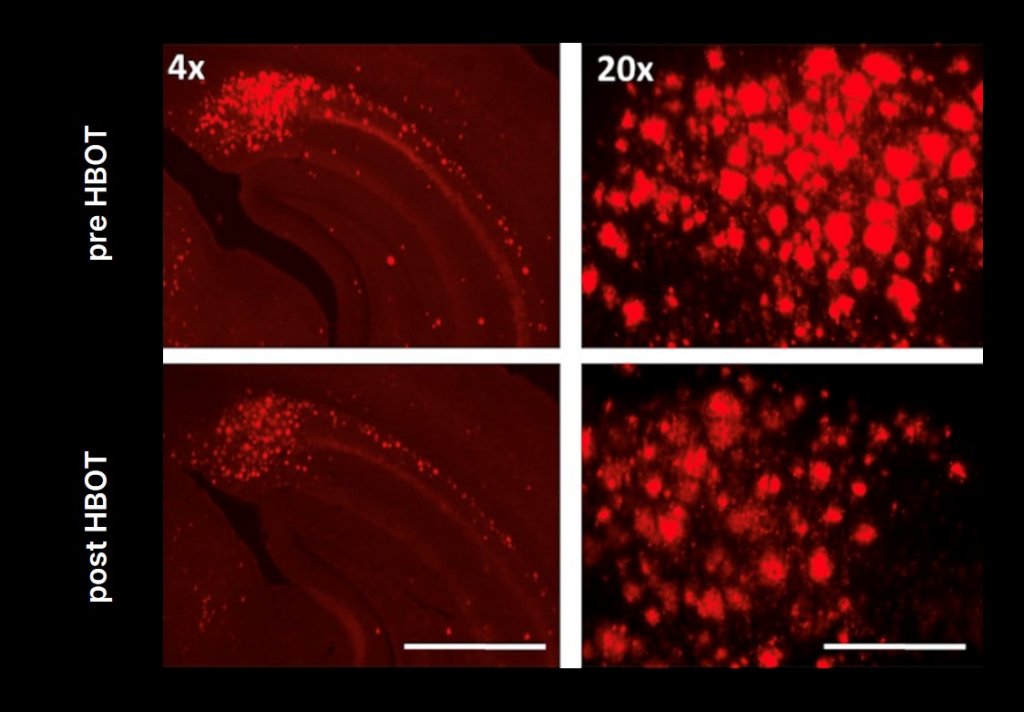
HBOT was also shown to prevent the formation of new amyloid plaques, and the mice exhibited improved performance on cognitive tasks when compared to the control group, giving us evidence that HBOT improved their cognitive functions.
The mice-based study gave promising new evidence that HBOT can be used as both a treatment and a preventative measure for Alzheimer’s disease. Researchers then sought to use the same protocol with human subjects.
The human test group consisted of six patients around age 70, all suffering from mild cognitive impairment. After receiving 60 daily HBOT sessions over a three-month period, the patients saw significant improvements to their cognitive functions, including better memory recall, concentration, and response times.
The researchers theorize that this is due to HBOT’s ability to increase blood flow in the brain. When the brain receives more blood, it receives more oxygen. And when the brain receives more oxygen, it can function at its full capacity.
What this means going forward
The study gives us hope that HBOT can be used as a viable drug-free and non-invasive method to prevent and treat Alzheimer’s disease, bringing us one step closer to preventing and even repairing memory loss and mild cognitive impairment.
“By treating vascular dysfunction, we’re mapping out the path toward Alzheimer’s prevention. More research is underway to further demonstrate how HBOT can improve cognitive function and become an influential tool in the imperative fight against the disease,” affirms Dr. Shai Efrati, one of the investigators conducting the study.
Dr. Efrati is also a medical advisor to Aviv Clinics in The Villages, Florida, which is the only location in the United States to offer the specific HBOT protocol used in this remarkable study. The Aviv Medical Program uses comprehensive testing and assessments before, during, and after the treatment protocol to track progress and provide multidisciplinary clinical team support.
For more information about the Aviv Medical Program, HBOT treatment, and how it may help your brain health, please contact us.
To read the study published in Journal Aging – click here.
Anti-Aging Effects of Hyperbaric Oxygen Therapy (HBOT) Shown to Reverse Aging Biomarkers in Humans
A landmark study in Israel has found that hyperbaric oxygen therapy (HBOT) can reverse two key biological signs of aging in humans—the first study to ever make this finding.
Published in the peer-reviewed journal Aging, the study shows that it is possible to target and reverse the aging process at the basic cellular-biological level.
This breakthrough in the biology of aging provides scientists with a new foundation for investigating ways to slow the aging process. Learn more about the empirically validated anti-aging effects HBOT can have.
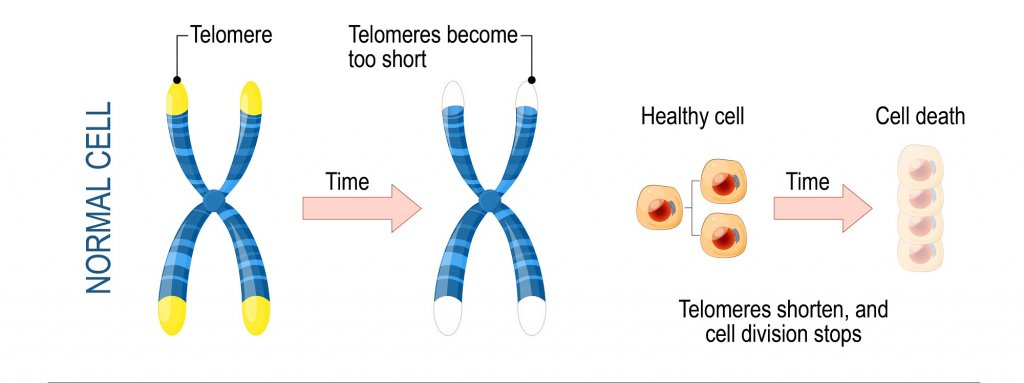
The 2 Key Biological Signs of Aging
Two common signs of biological aging are:
- Shortening of telomeres on our chromosomes: Telomeres are like the hardened ends of shoelaces. They protect the ends of chromosomes from deterioration. As we age, our telomeres naturally shorten, but a yearly decrease of their length by 20–40 bases is associated with serious illnesses.
- Accumulation of senescent cells: Senescent cells are cells that are still alive, but have stopped multiplying. Over time, these cells can accumulate in the body and their increase contributes to age-associated conditions.
In the groundbreaking study, patients aged 64 and older underwent a series of unique HBOT anti-aging programs. Multiple blood tests conducted during the study showed “HBOT may induce significant senolytic effects including significantly increasing telomere length and clearance of senescent cells in the aging populations.”
The “Holy Grail” of the Biology of Aging
A different study released in 2020 showed that HBOT also improves cognitive functions of memory and processing speed, among other areas.
The studies have been conducted over a decade of research and caused Dr. Shai Efrati—the study’s co-author—to develop a unique medical program available at Aviv Clinics.
According to Efrati, director of the Sagol Center for Hyperbaric Medicine and Research at the Shamir Medical Center in Israel:
“After dedicating our HBOT research to exploring its impact on the areas of brain functionality and age-related cognitive decline, we have now uncovered for the first time in humans HBOT’s biological effects at the cellular level in healthy aging adults.”
Efrati called telomere shortening “the ‘Holy Grail’ of the biology of aging” and developed the Aviv Medical Program based upon the results testing, study, and research.
“The significant improvement of telomere length shown during and after these unique HBOT protocols provides the scientific community with a new foundation of understanding that aging can, indeed, be targeted and reversed at the basic cellular-biological level.”
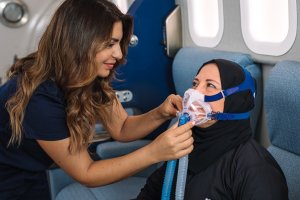

Study Findings on Anti-Aging Effects of HBOT
- “Telomeres length of T helper, T cytotoxic, natural killer and B cells increased significantly by over 20% following HBOT”
- “There was a significant decrease in the number of senescent T helpers by -37.30%±33.04 post-HBOT.”
According to Dr. Amir Hadanny (co-author of the study) the pioneering study has:
“Opened the door for further research on the prolonged cellular impact of HBOT to reverse the aging process. In just three months of HBOT, we were able to achieve such significant telomere elongation—at rates far beyond any of the currently available interventions or lifestyle modifications.”
There is also the potential for HBOT to be used as an anti-aging mechanism for skin care. HBOT may serve as “an important component in skin rejuvenation, treatment of photoaging skin, and improvement in skin complexions.”
Notable Individuals Who Have Pursued HBOT
Due to the impressive data-backed results, many notable individuals have decided to pursue HBOT themselves:
- Michael Phelps: 28-time Olympic medalist used hyperbaric oxygen therapy to help with his recovery from training. The high-altitude conditions and boosted levels of oxygen have aided in helping Phelps bounce back from his workouts and continue to win medals throughout his 24-year career.
- Justin Bieber: Having been diagnosed with Lyme Disease and dealt with drug abuse, the pop star regularly uses hyperbaric oxygen therapy. Bieber, who also mentioned he struggles with anxiety and depression, notes that HBOT helps alleviate his stress levels.
- Alon Day: The demands of professional racing are high, with reaction times measured in fractions of a second. Watch three-time NASCAR Whelen Euro Series champ Alon Day explain how the treatments offered by the Aviv Medical Program ensure he meets the sport’s high demands — both mental and physical.
- Watch video here
The Aviv Medical Program: What We Offer
The unique HBOT protocol from the extensive research outlined earlier is available in the United States only at Aviv Clinics. The Aviv Medical Program may include a combination of:
- In-depth review of health history
- Comprehensive physical exam
- Highly advanced brain imaging scans
- Neurological and neurocognitive tests
- Body composition analysis
- A detailed report of our assessment findings
- Cognitive training
- Physical training
- Dietary coaching
- Hyperbaric oxygen therapy (HBOT)
- A post-program report of your improvements and recommendations for future progress
Each patient undergoes extensive assessments and evaluations before, during, and after their HBOT sessions to monitor and analyze progress.
Here’s What Our Clients Have to Say
Aviv Clinic’s clients are a testament to the benefits our program offers. We’ll let these reviews speak for themselves:
- “I can’t thank the team at Aviv enough for helping me feel better than I have in over twenty years. I have more energy, more focus and live a healthier and more fulfilling life. Your support and encouragement has made a total difference in my life. Thank you for all you do.”
—Barbara Christoph
- “My wife and I took the program together and had an amazing experience. Both of us are healthier and happier than before and are continuing on with what the program showed us. An amazing staff led by leading edge doctors who are second to none. I recommend this program to anyone suffering from the ailments of aging and loss of cognition.”
—Andy Smith
- “My goal for attending the Avivprogram was healthy aging. I also wanted to manage stress better, address chronic back issues, gain weight and improve cognitively…I have experienced several unanticipated and unintentional benefits of the Aviv program: I have reduced my alcohol consumption. Never having been one to turn down a glass (or two) of wine, I just don’t have the desire to drink as much; My skin seems smoother and more supple. I am told I look younger and that is always nice to hear; I have made incredible friendships through the Aviv program and met some celebrity athletes and renowned physicians. I am particularly grateful to an orthopedic surgeon I met who was also participating in the Aviv program that helped me focus my attention on managing my osteoporosis.”
—Zizi MacKinnon
More information about Aviv Clinics Dubai, click here.
The clinic offers free phone consultations for interested individuals.
Contact the clinic to learn more about the unique program.
Telomeres and Reverse Aging: A Deep Dive into the Connection
Aging seems to be an inescapable part of life: spines shrink, skin wrinkles, and attention spans dissipate. But what if aging was escapable—or at least reversible? What if scientists were able to target the root cause of aging in our very own cells and treat it as if it were an illness?
Researchers in Israel have conducted the world’s first study to prove that biological aging can be reversed:
- Scientists were able to reverse the biological aging process in “thirty-five healthy independently living adults, aged 64 and older.” Through the targeted application of a unique hyperbaric oxygen therapy (HBOT) protocol.
- Telomeres are one of the critical biomarkers of age, and they naturally shorten during the aging process. The research study showed HBOT may help with “increasing telomere length…in the aging populations.”
- These findings are truly groundbreaking, given the accessibility of hyperbaric oxygen treatment. However, Aviv Clinics in central Florida is the only center in the United States to offer this unique HBOT treatment protocol.
So how did these researchers manage to accomplish such a seemingly impossible task that existed only in science fiction just 50 years ago? The answer lies in telomeres—a critical component of your DNA.
What Are Telomeres?
A telomere is a protective cap found at the end of each DNA strand in the human body. They are considered one of “two key hallmarks of the aging process.”
The two types of age to keep in mind are:
- Chronological age, or how many birthdays you have had
- Biological age, or the age that reflects your body’s functions
When considering telomeres, here’s how they manifest in age:
- Short telomeres equate to an older biological age.
- Longer telomeres equate to a healthier, younger biological age.
So it is entirely within reason for a healthy 60-year-old (chronological age) to be much younger (biologically speaking) if they have long, healthy telomeres to continue to protect their cells.
Telomeres and Shoelaces
Telomeres work much like the hardened end caps of shoelaces. Those components on your shoelaces protect the delicate strings they are connected to. Without a protective cap, a shoelace can quickly become frayed and unusable.
As long as the cap persists, a shoelace can stay intact for quite some time. Similarly, telomeres prevent damage from occurring to your underlying DNA:
- With intact telomeres, your cells are protected and they can continue functioning like normal.
- Without telomeres, your cells essentially begin to age and die.

Telomeres and DNA
DNA is a commonly understood component of human biology. Few people go through life consciously thinking about how DNA functions.
Let’s change that with some facts:
- Your DNA contains the biological instructions necessary for your body to continue developing.
- Millions upon millions of cellular processes occur within a human body at any given time.
DNA manages those processes, calmly instructing your cells to divide, consume, and produce complex proteins to stay alive. Telomeres play a vital role in this function.
Telomere Length Naturally Decreases with Age
As we age chronologically, our telomeres naturally shorten. This exposes our DNA, leaving our bodies vulnerable to the diseases and effects of aging.
Some of the common diseases of aging—onset by shortened telomeres—include:
- Heart disease
- Stroke
- Diabetes
- Cancer
- Dementia
When the telomeres in your cells become too short, they enter an aged, unhealthy state called senescence. In senescence, a cell can no longer divide to continue replenishing the body’s vital tissues, which makes a person more susceptible to the diseases listed above.
Stress May Impact Telomere Length
External factors like stress can also affect telomere length. The American Psychological Association (APA) reports:
- “Chronic stress and cortisol exposure decrease your supply” of telomerase—the enzyme that replenishes telomeres. So when stress affects your life heavily, you become more susceptible to shorter telomeres.
- Stress is now “one of the most consistent predictors of shorter telomere length.” Exposure to life hardships (e.g., childhood neglect or caregiving in late adulthood) has been particularly noted for its impact on telomere length.
How Aging Manifests
Keep in mind, aging can look different for everyone. Some individuals may notice physical or cognitive changes as they age.
Physical changes may include:
- Wrinkled or sagging skin
- Whitening or graying hair
- Immune, metabolic, kidney, or liver issues
Cognitive changes may include:
- Memory trouble
- Mood shifts
- Slower executive function (e.g., thinking and decision-making, multitasking)
What Is Reverse Aging?
Now for some good news: Whatever type of aging you face, reversing it is possible. When referring to “reverse aging,” we mean biological age. Though chronological aging is inevitable, certain treatments can manage some of the biological shifts that occur because of natural aging and external factors.
The Research Behind Telomeres and Hyperbaric Oxygen Therapy (HBOT)
With the importance of telomeres and aging now understood, most people ultimately want to know:
- How to protect their telomeres, and
- How to repair any degradation that has already occurred.
The scientific research team led by Dr. Shai Efrati, founder and director of the renowned Sagol Center for Hyperbaric Medicine and Research in Israel, proved—for the first time—that reversing biological aging is possible.
By using hyperbaric oxygen therapy (HBOT), Dr. Efrati and his team of scientists were able to increase the length of telomeres in people aged 65 or older by more than 20%.
Research Method
HBOT involves the patient inhaling pure oxygen in a pressurized environment. This study was conducted on 35 different adults aged 65 and higher. Patients had their blood measured before the study, as well as during the 30th and 60th sessions of HBOT.
Research Findings
The findings were truly unbelievable:
- The telomere length of patients who received HBOT “increased significantly by over 20% following HBOT”—in just three months!
- “There was a significant decrease in the number of senescent [cells],” reducing the number of these dangerous, aging cells with little-to-no telomere length by as much as 37%.
These findings were the basis for creating the cutting-edge HBOT protocol only available at Aviv Clinics.
How Can I Protect My Telomeres?
“Telomere length is genetically determined, with heritability estimates ranging from 44% to 80%.” Fortunately, that still leaves you with a wide margin to protect!
Thankfully, there are many different ways you can protect your existing telomeres and thus control damage and the negative impacts of aging. These include:
1. Exercise Regularly
Research has shown that people with high levels of physical activity have significantly longer telomeres than moderately active or sedentary adults. More specifically, adults who regularly exercise demonstrate a biological age difference of nine years when compared to those who don’t.
2. Maintain a Balanced Diet
Like regular exercise, a balanced diet is crucial in protecting telomere length. High levels of body fat create high levels of oxidative stress—stress that directly affects your cellular integrity.
To protect the length of your telomeres, you must reduce the levels of oxidative stress in your body. Maintaining a healthy, balanced diet rich in antioxidants can provide your DNA with the proper protection it needs to maintain healthy, long telomeres.
3. Avoid Smoking & Alcohol Use
You already know that smoking and drinking alcohol aren’t the healthiest decisions—but did you know that people who smoke have shorter telomeres than those who don’t?
Likewise, people who excessively consume alcohol experience faster levels of biological aging than those who don’t. The science is in: If you’re interested in protecting the length of your telomeres, stay away from tobacco and alcohol.
4. Manage Stress
Stress, especially higher cortisol levels, is one of the main reasons for shortened telomeres. Stress takes many forms, but we are mainly concerned with psychological, chronic, and life-related stress.
These kinds of stress raise the levels of oxidative stress placed on the cells of your immune system. Fortunately, there are many wonderful methods for mitigating stress in our daily lives. Whether it is mindfulness, martial arts, or meditation, you will likely be able to find a method that works best for you.
Fight Aging with Aviv Clinics
Aging manifests differently for everyone, but help is available. Aviv Clinic’s age-related decline program is based on research and has helped many clients restore the youthful vitality they seek and deserve.
If you’d like to learn more about how you can boost your cognitive or physical performance while reversing the effects of aging, contact our team.
Hyperbaric Oxygen Therapy Induces Cognitive Function: New Study Shows
In the past hundred years, life expectancy has risen from 55 to 80. A critical focus of medicine and healthcare in general, innovative drug therapies, medical devices, and other aspects of modern diagnostic, treatment, and recovery have all played a role in this. The emphasis is now shifting to extending ‘healthspan’ to match lifespan. There are, of course, limits to the physical capabilities of the body but one vital organ, traditionally associated with modern treatment, is proving highly responsive to new therapies. Brain functions can not only be kept from decline but even improved.
Lifestyle changes, specifically diet, physical and mental exercise, have long been recognized to increase cognitive function as we get older. Foods, fitness machines and applications abound explicitly aimed for the older generation. But the elixir of a drug or other therapies that significantly fight age-linked cognitive decline has so far proved elusive.
A recently published study by researchers from Israel has shown that Hyperbaric Oxygen Therapy (HBOT) is emerging as an essential therapy in reversing an age-related decline in cognitive function.
HBOT as an enhancer of brain function
Dr Shai Efrati, Dr Amir Hadanny and a team at the Sagol Center for Hyperbaric Medicine and Research at Shamir Medical Center, lead researchers of a new study published in the peer-review journal, Aging, demonstrated the benefits of an HBOT therapeutic protocol created at the Shamir Medical Center.
The study was a collaboration between the Sackler School of Medicine and Sagol School of Neuroscience at Tel Aviv University.
The study was the first controlled clinical and randomized trial exploring the effect of HBOT on cognitive functions in fit ageing adults. It determined that HBOT was especially beneficial for the participants in improving comprehensive cognitive functions: attention, information processing speed and executive functions.
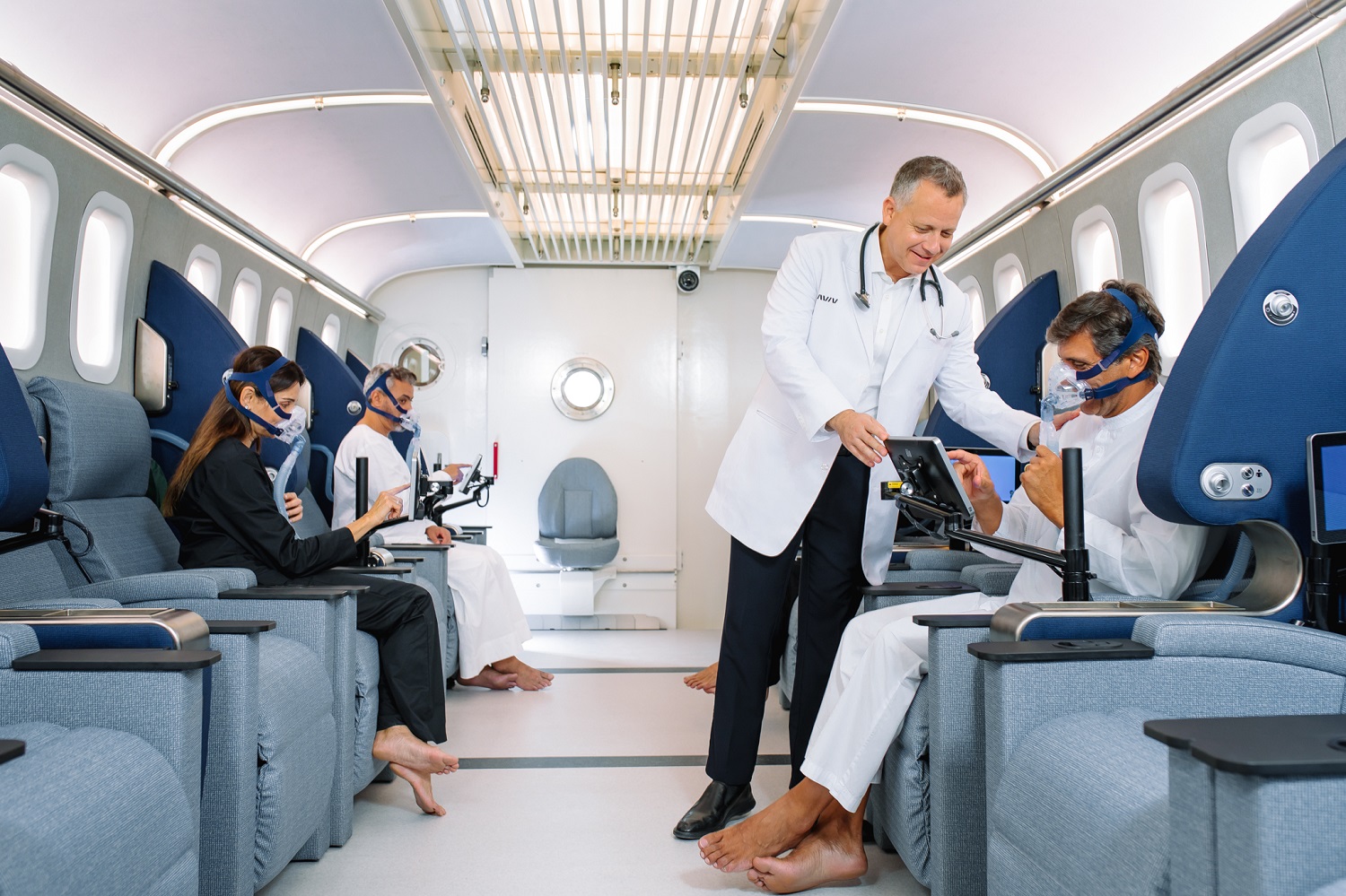
HBOT is emerging as an essential therapy in reversing an age-related decline in cognitive function.
HBOT’s role in reversing Age-Related Cognitive Decline
Dr Efrati issued a statement marking the publication of the study, in which he underlines the consequences and concerns related to decline in cognitive and functional ability in highly-developed societies:
“Major research efforts around the world are focused on improving the cognitive performance of the so-called ‘normal’ ageing population,” Dr Efrati said. “In our study, for the first time in humans, we have found an effective and safe medical intervention that can address this unwanted consequence of our age-related deterioration.”
Dr Hadanny added the treatment has now been in use for several years and scientists have begun to comprehend how brain function can be restored with HBOT.
“In the past, we have demonstrated HBOT’s potential to improve/treat brain injuries such as stroke, traumatic brain injury and anoxic brain injury (due to sustained lack of oxygen supply) by increasing brain blood flow and metabolism,” Dr Hadanny concluded: “This landmark research could have a far-reaching impact on the way we view the ageing process and the ability to treat its symptoms.”
Mechanism of Hyperbaric Oxygen Therapy
Though the brain accounts for only 2% of body mass, it utilizes over 20% of an individual’s oxygen intake, much of the cause of a decline in physical and cognitive functioning can be ascribed to a decrease in efficiency of oxygen processing associated with ageing.
The HBOT protocol targets this problem by placing patients in a pressurized suite where they breathe 100% oxygen. This raised oxygen in the body tissue by between 10 to 15 times above normal. Not only do overall oxygen levels increase, but the fluctuations in the oxygen levels in the body leads to the release of growth factors and stem cells that promote healing.
Conclusions on oxygen and brain function
The study enrolled sixty-three healthy, vigorous adults who were subjected to HBOT for two hours a day, five days a week, for three months. Their cognitive function was measured by using a comprehensive series of computerized cognitive appraisals. Cerebral blood flow was quantified by using a magnetic resonance imaging technique that observes the journey blood takes through the organs and tissues, known as brain perfusion.
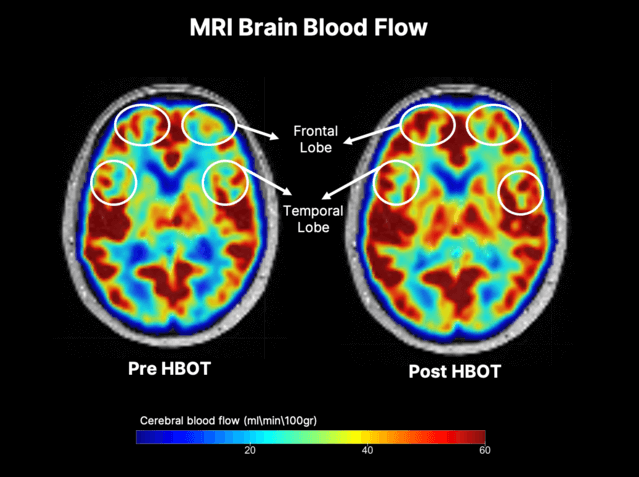
Amongst the essential conclusions of the analysis was the correlation between the above-noted improvements and cerebral blood flow to different areas of the brain.
The study swells the mass of data regarding the efficacy of HBOT in generating brain function. Noticeably, the combination of pure oxygen and higher pressure led to increases in tissue oxygenation whilst simultaneously focusing on pressure-sensitive genes. Combined, this enhanced and restored tissue metabolism. This was the first time that such benefits had been observed in healthy patients as previous studies had focused on patients with cerebral impairments due to a range of conditions.
HBOT and reversal of cognitive decline in ageing
The improvements noted in the participants’ attention and cognitive processing speeds, possibly because of amplified blood flow to the brain. HBOT enhanced cerebral blood flow and regenerate brain cells and blood vessels in individuals with no brain damage. Previous studies had concentrated on the benefits to post-stroke, traumatic and anoxic brain injury
These improvements in overall cognitive function were still observable six months after treatment, Dr Efrati, writing in Psychology Today, proposed that the technique might even reverse damaged brain tissue. He further noted that this would be the first time an effective medical intervention had been observed to reverse age-related cognitive decline.
“Most drugs and interventions are at best slowing the expected decline,” he said. “For the first time in humans, we have discovered a way to regenerate the ageing brain — as can be seen by brain MRI — and enable us to gain back the cognitive function of our younger selves.”
The Aviv Clinics, JLT, Dubai U.A.E. is now using this very protocol to stimulate cognitive enhancement in healthy ageing adults.
Encouraging results in healing anoxic brain damage with Hyperbaric Oxygen Treatment
According to the CDC, “roughly 805,0000 Americans in the United States have a heart attack each year.” The resultant damage to the heart is well understood, but a cardiac arrest can have equal impact on the brain.
Researchers found “cognitive impairments after OHCA [out-of-hospital cardiac arrest] are common and affect up to 50% [of patients].” These impairments involve “executive functions, memory, and processing speed.”
Oxygen deprivation during the heart attack can lead to an anoxic brain injury. The effects of oxygen deprivation include diminished visual perception, cognition, expression, and more.
Fortunately, there is researched-based evidence that offers hope for anoxic brain injury treatment. And Aviv Clinics at The VillagesⓇ may have the resources and tools to unlock this potential. Keep reading to learn more.
What Is Anoxic Brain Injury?
Anoxic brain injury occurs when there is a complete lack of oxygen to the brain. After about four minutes of oxygen deprivation, brain cells begin to die.
Here’s why and how:
- Blood carries oxygen to the brain
- Malignant conditions (such as a blood clot, stroke, or heart attack) cause the blood flow to slow or get blocked.
- Other circumstances like high altitude (where oxygen is lacking) and exposure to toxic substances (e.g., carbon monoxide) can also lead to restrictions in blood flow.
What Are Symptoms of Anoxic Brain Damage?
Symptom of anoxic brain injury may include:
- Headaches
- Difficulties with thinking, focusing, and memory
- Mood swings
- Loss of consciousness
- Changes in sleeping patterns
- Seizures
- Vision problems
Use of HBOT in Improving Brain Function
Hyperbaric oxygen therapy (HBOT) is a novel therapy that increases oxygen levels in the body up to 20 times higher than normal. This effect increases the amount of oxygen in the blood, providing the energy the brain and body need to revive self-healing mechanisms.
What Research Says
A study from the Restorative Neurology and Neuroscience reports HBOT “can induce neuroplasticity and improve cognitive functions of patients suffering from anoxic brain damage.” This is valid many months—and sometimes years—after the cardiac event.
Research Method
The study assessed:
- 11 cases of patients with chronic cognitive impairments (CCI) from cardiac arrest
- Patients’ neurocognitive abilities prior to HBOT treatment
- The overall functionality of patients’ daily activities
- Patients’ general well-being
- Scans of affected areas, using new brain metabolism imaging equipment
All of these observations were carried out again, following treatment with HBOT. Patients were given “60 daily sessions” of HBOT—all of which were conducted “0.5–7.5 years after the cardiac arrest.”
Research Conclusion
Notwithstanding the lengthy period following the cardiac event, HBOT treatment showed to have a substantial impact on the patients’ cognitive abilities:
- Clinical changes were assessed through neurocognitive assessments. These tests showed a distinct correlation between the recorded results and improvements in the quality of life and ability to undertake daily activities.
- HBOT “was found to induce modest, but statistically significant improvement in memory, attention and executive function.”
- According to the authors of the study, HBOT is able to “reactivate neuronal activity by increasing plasma dissolved oxygen”. This approach delivers oxygen to the brain in a highly efficient manner.
- Thus, it is very probable HBOT will be a candidate for enhanced therapy for anoxic brain injury patients with the appropriate profile.
Hyperbaric Oxygen Treatment for Brain Injuries
In addition to anoxic brain damage, there are other types of brain injuries—several of which may benefit from hyperbaric oxygen therapy.
For example:
- One study reports “in children with traumatic brain injury (TBI), the addition of HBOT significantly improved outcome and quality of life and reduced the risk of complications.” As it is definitely possible to have a TBI and not know it, further research notes HBOT can “improve post concussion syndrome years after mild traumatic brain injury.”
- Another research study conducted HBOT on post-stroke patients in the chronic stage between 2008–2018. Results concluded that:
- “HBOT induces significant improvements in all cognitive domains even in the late chronic stage.”
- “HBOT induced a significant increase in all the cognitive function domains (p < 0.05), with 86% of the stroke victims achieving CSI [clinically significant improvements].”
- In a study that conducted HBOT on 73 long-COVID patients with “persisting physical, neurocognitive, and neuropsychological symptoms,” clinical outcomes illustrated “significant improvement in brain MRI perfusion and microstructural changes in the supramarginal gyrus, left supplementary motor area, right insula, left frontal precentral gyrus, right middle frontal gyrus, and superior corona radiata.”
Get Back to Optimal Performance with Aviv Clinics
A unique protocol based on Hyperbaric Oxygen Treatment was clearly shown to help heal anoxic brain damage. This protocol is available at the Aviv Clinic at the Center for Advanced Healthcare at Brownwood, The Villages, Florida.
For more information, or to schedule a consultation, contact the clinic.
This protocol is available at the Aviv Clinics, JLT, Dubai U.A.E.
For more information, or to schedule a consultation, contact the clinic.
